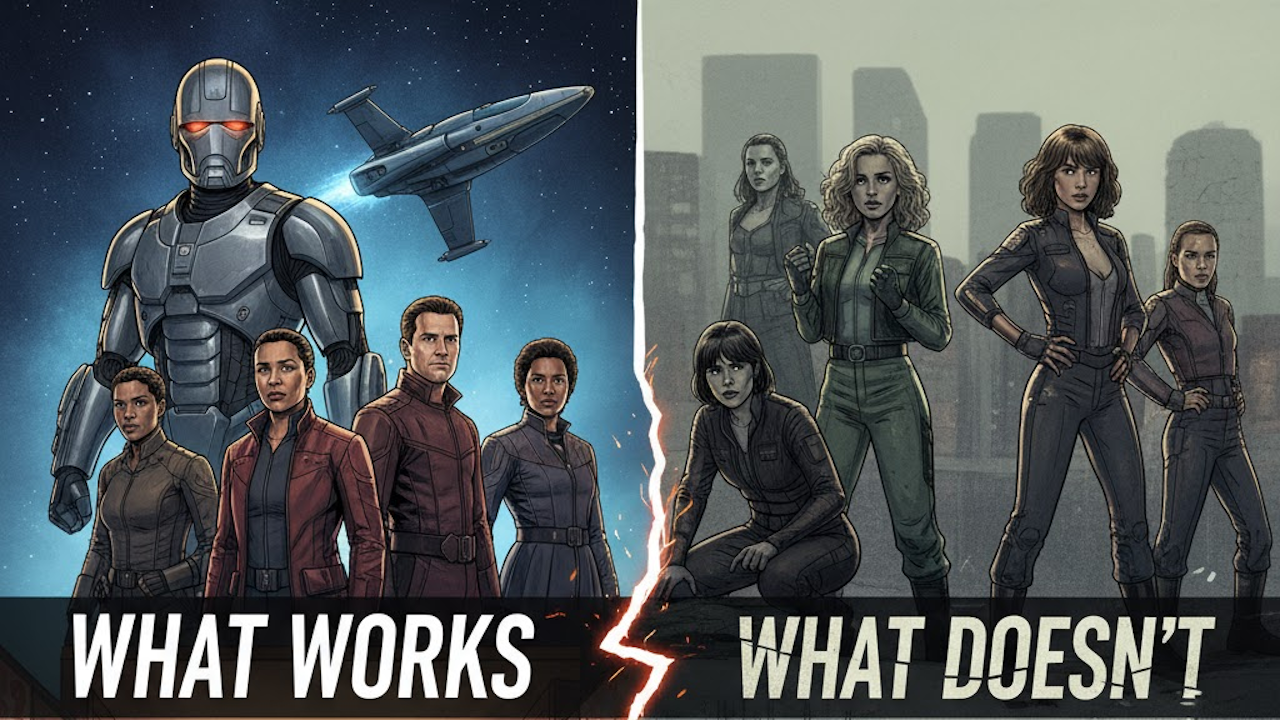In the contemporary landscape of film and television, the air is thick with the dust of repurposed intellectual property. Reboots and revivals—terms often used interchangeably but with distinct meanings—have become a dominant feature of Hollywood’s production strategy. While a reboot completely restarts a franchise, offering a new continuity, cast, and creative direction (like the 2004 Battlestar Galactica or Christopher Nolan’s Batman Begins), a revival continues the original story after a long hiatus, usually with the original cast and established timeline (such as Cobra Kai or Twin Peaks: The Return). The success of these projects is not guaranteed; for every triumphant return, there are multiple disappointments.
The Lure of Nostalgia and Reduced Risk
The primary driving force behind the reboot and revival phenomenon is simple economics. In an age of high-budget productions and crowded media markets, a known property offers an immediate advantage: a built-in audience and brand recognition. Nostalgia is a powerful selling tool, emotionally connecting an audience to an earlier time in their lives. Studios calculate that an established name reduces the financial risk associated with launching completely new, untested intellectual property. A familiar title on a streaming service or a movie poster instantly captures attention.
This strategy, however, is a double-edged sword. While the initial draw is strong, the high expectations that accompany a beloved franchise can quickly turn to resentment if the new iteration fails to deliver.
What Makes a Reboot or Revival Work?
The most successful reboots and revivals manage to strike a delicate balance between honoring the past and reinventing the property for a new era. This equilibrium is crucial for gaining both the approval of original fans and the curiosity of new viewers.
Respecting the Core DNA, Not Just the Superficials
A successful project understands the essential spirit of the original work.
- Deeping the Themes: The best reboots recognize that the original’s success was often due to its underlying themes, not just its surface-level mechanics. The 2004 Battlestar Galactica, for instance, transformed a campy 1970s space opera into a gritty, politically charged drama about survival, faith, and humanity’s flaws. It kept the central conflict—humans versus Cylons—but deepened the narrative and made it relevant to modern anxieties.
- The Power of Continuation: Revivals like Cobra Kai are a masterclass in this, taking the premise of The Karate Kid and exploring the natural, complex evolution of its main characters, Daniel LaRusso and Johnny Lawrence, now adults. It avoids simply repeating the past, instead using the original rivalry as a catalyst for new stories and a new generation of characters.
Finding a Modern Purpose
Projects that succeed invariably have a genuine, compelling reason to exist beyond a simple cash grab.
- Modernizing Sensibilities: The reboot of One Day at a Time kept the multi-camera family sitcom format of the Norman Lear original but updated it to focus on a Cuban-American family, tackling contemporary issues of identity, mental health, and immigration with heart and humor. This provided a fresh, vital perspective while maintaining the original’s emphasis on inter-generational family conflict.
- Creative Freedom: Reboots that distance themselves significantly from the original’s format, allowing for new creative voices and structures, often thrive. The U.S. version of The Office took the single-camera, mockumentary style of the British original and built upon it, creating an entirely new, deeply developed ensemble of characters and a longer, distinct narrative arc.
The Pitfalls: What Causes a Reboot to Fail?
The path to a failed reboot is often paved with good intentions—and poor execution. The most common mistakes center on creative misdirection and a fundamental misunderstanding of the original fan base.
Mistaking Aesthetics for Essence
Many failures focus too heavily on replicating the visual style or catchphrases of the original while ignoring the character and emotional core that made it beloved.
- The Shallow Imitation: Attempts to simply re-stage classic scenes or rely solely on cameos from original actors often fall flat, signaling a lack of new ideas. These projects are usually deemed redundant by critics and fans, offering nothing fresh.
- Alienating the Core Audience: The Charlie’s Angels and Bionic Woman reboots, for example, were criticized for stripping away the elements that made the original concepts distinct, changing them so drastically in an attempt to be “different” that they lost the appeal of the source material.
Relying Too Heavily on Nostalgia
While nostalgia is a powerful lure, it cannot sustain a series or film.
- A Lack of Forward Momentum: If a revival or sequel is too beholden to the past, it risks stagnating. The initial Netflix seasons of Arrested Development, for some viewers, struggled because the original show’s highly specific, interconnected humor felt forced by attempts to recreate the past dynamic, rather than letting the characters evolve naturally into new roles.
Poor Casting and Chemistry
For ensemble-driven shows, the chemistry of the new cast is non-negotiable.
- Mismatched Ensembles: If the new actors fail to capture the magic of the original pairings, the production will likely flounder. The attempt to reboot the supernatural drama Charmed, for example, faced backlash not just for its premise changes, but for failing to establish the authentic, lived-in sisterly bond that was the emotional anchor of the original series.
Conclusion: A Delicate Art
Reboots and revivals are not inherently a sign of creative bankruptcy; rather, they are a powerful opportunity for modern storytelling that is both profitable and artistically fulfilling. The greatest successes, such as Doctor Who‘s 2005 relaunch or the cinematic impact of Batman Begins, prove that an old idea, viewed through a new lens, can resonate deeply with a global audience.
The formula for success is demanding: take the deep, lasting truth of the original, be brave enough to change everything else around it, and have a passionate, creative vision for why the story must be told again, now. When a project exists only to capitalize on a title, it fails. When it exists to offer a vital, modernized interpretation that expands the world and deepens the characters, it triumphs.

